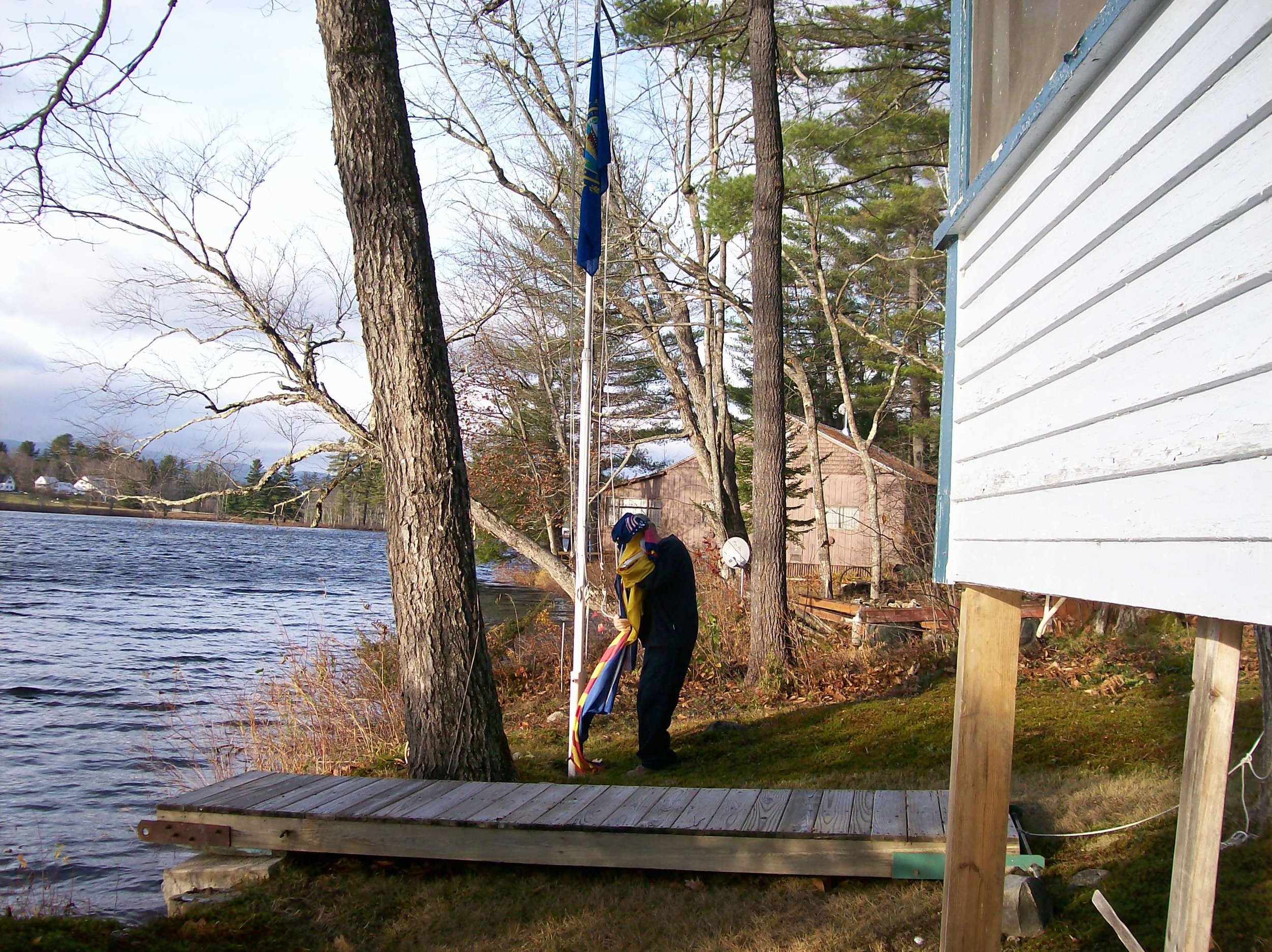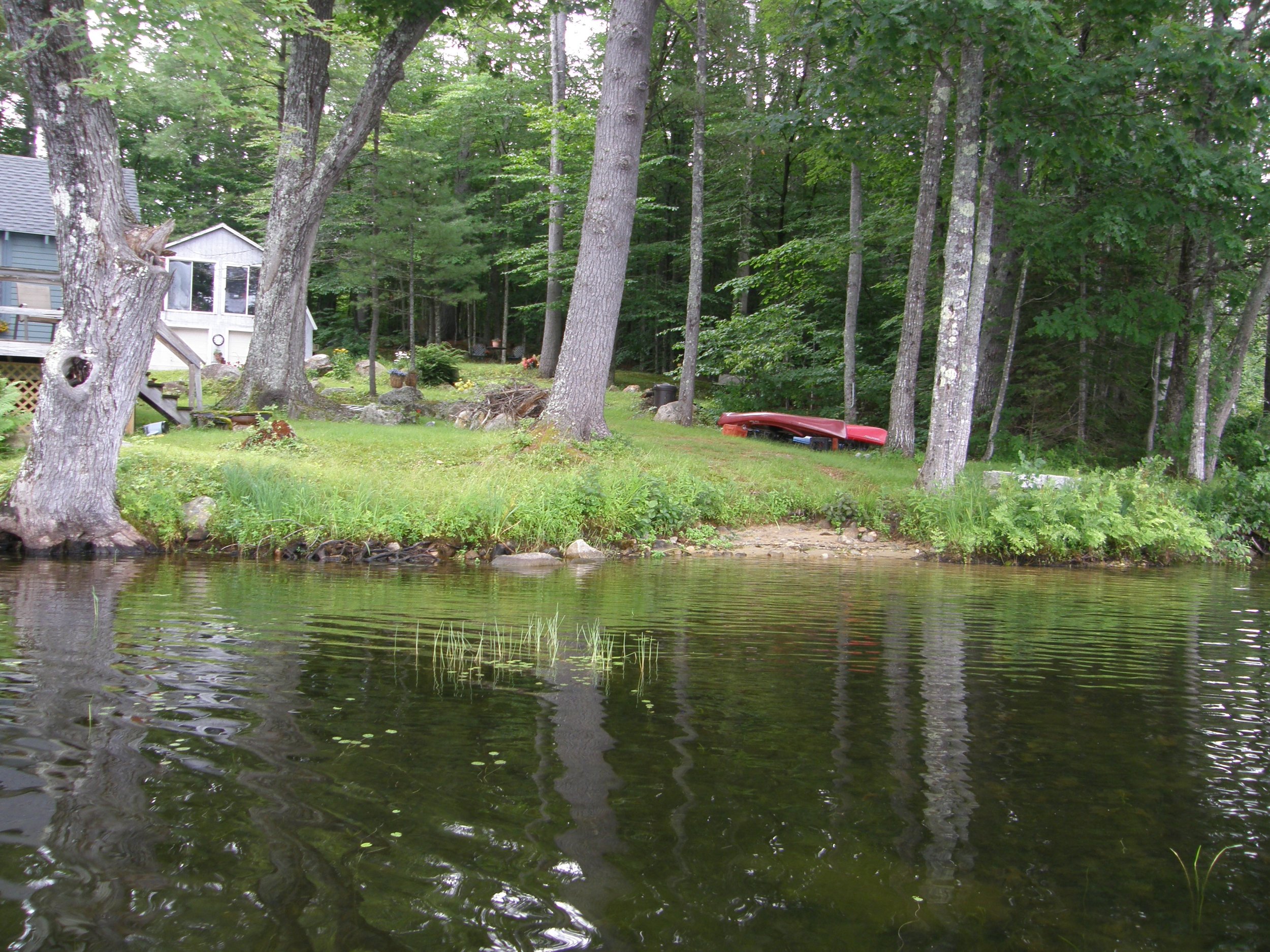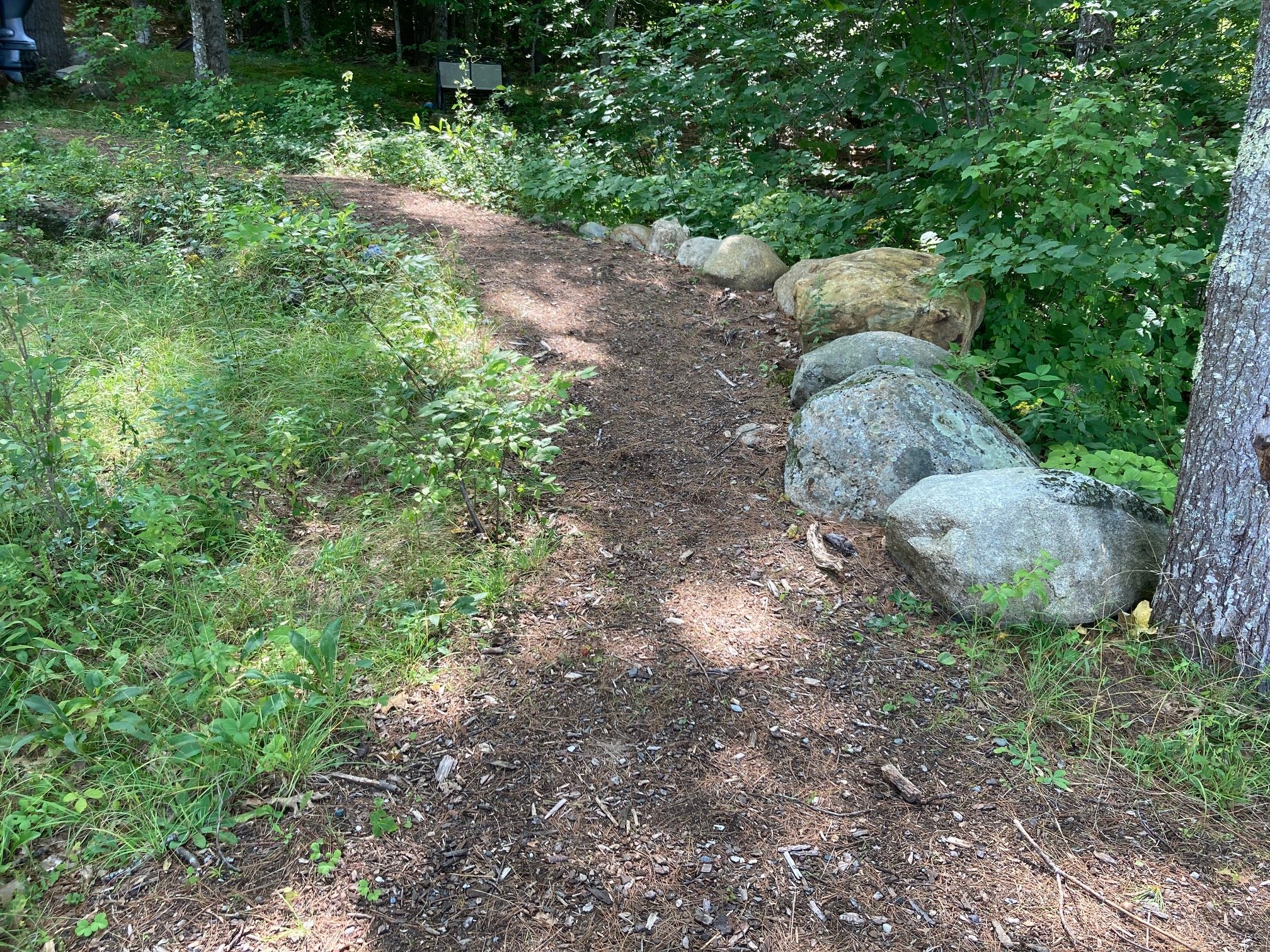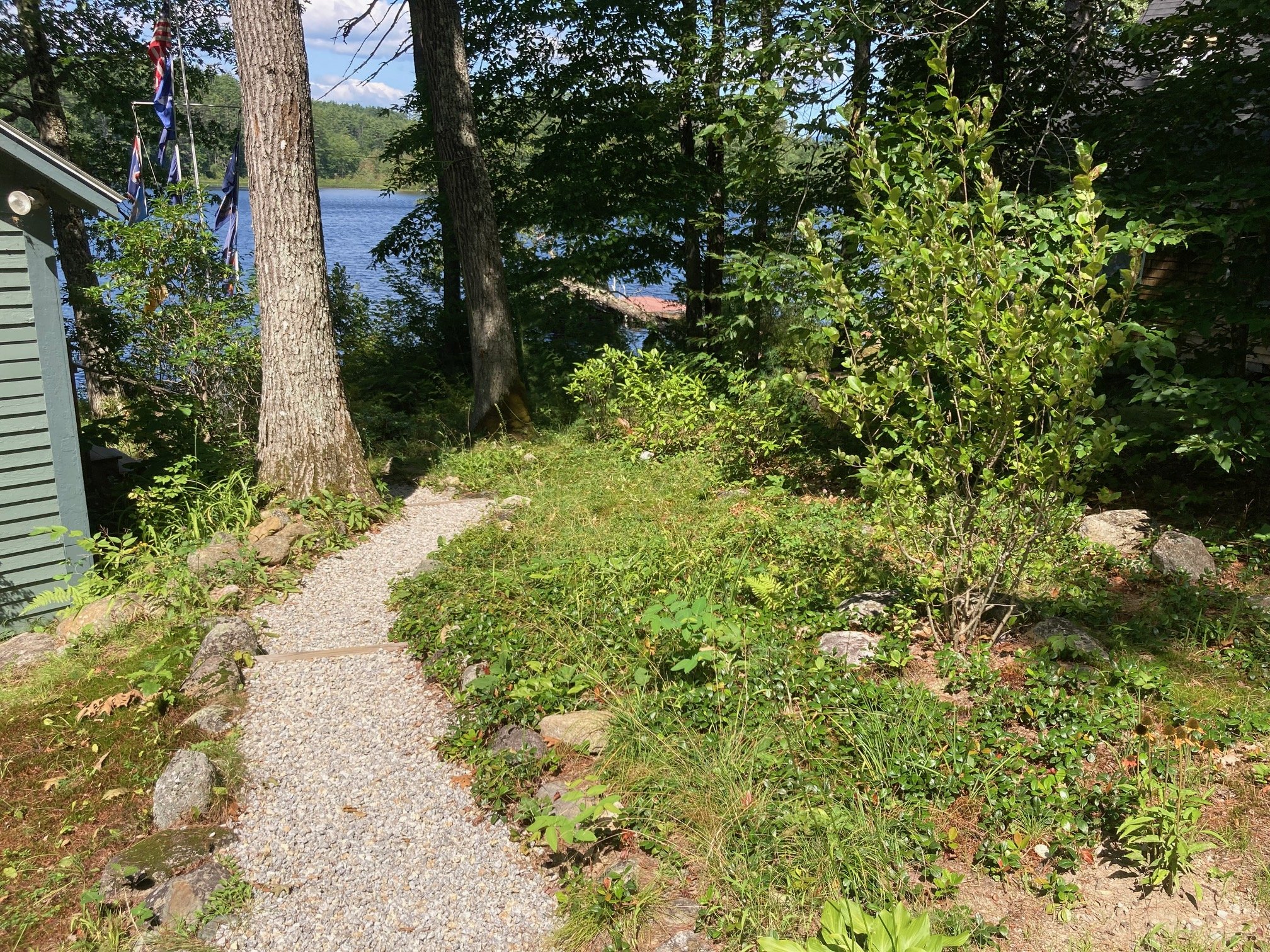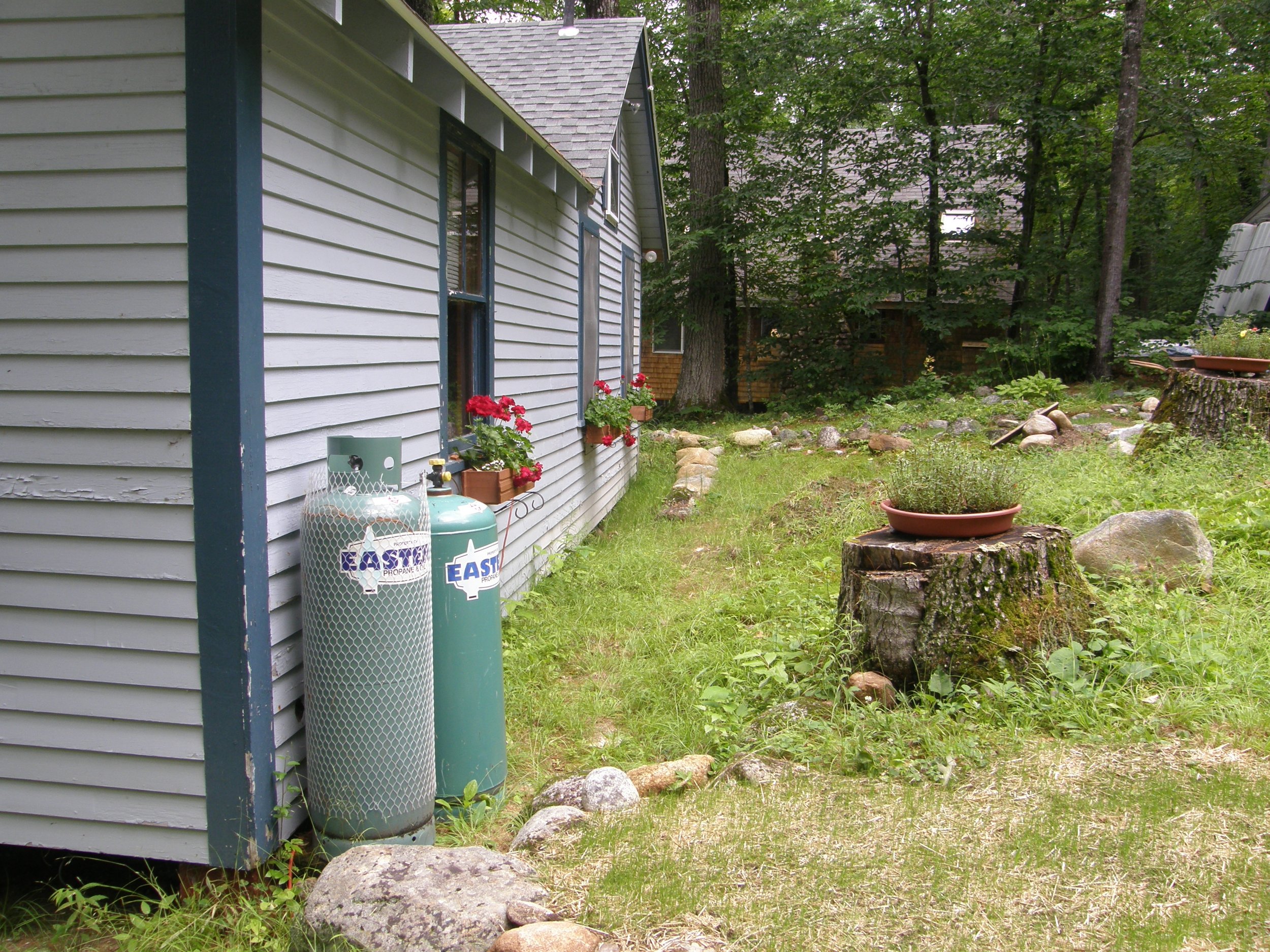How a couple made their property lake-friendly and found they liked their “new look” even more.
Bill Paulman and Sarah Clemons and their families have had the camp on Kezar Lake for over 75 years. What they didn’t know during that time was how the lake could be negatively affected by what they did on their property. Increased run off from lawns and driveways could add sedimentation and phosphorus that could contribute to algae blooms on the lake.
Then Bill and Sarah learned about LakeSmart, a free program for landowners offered by Maine Lakes. They introduced the program to Kezar Lake in 2017. When they had their property evaluated they learned there was a lot they could do to make their property lake-friendly. It would take some time but not a lot of money to do it. So, they started to implement some changes that would have a positive impact on the lake.
One of the most important changes was restoring a strong buffer on their shoreline. Their property is very close to the lake. It was built in 1925 and, as you can see in the before picture, there wasn’t a buffer between the house and the lake. Bill and Sarah added plants, a couple of trees, and eliminated the walkway in front of the house. After they did all this, they found it did not impact their view at all, and it made a great filtering system for the runoff.
Before – No Buffer After – New Buffer
They also restored the buffer on the rest of their property. Before, Bill and Sarah had a driveway down to the shoreline where they launched boats. This driveway delivered stormwater runoff and sediment into the lake. They diverted the runoff with a water bar and let the driveway revert to a natural area and added a few plants.
Before – Driveway to Lake After – Restored
Adjusting their pathways also had a positive impact on the property. Before, their paths went straight to the lake and were paved with asphalt. This meant runoff had a straight shot to the lake with nothing to slow it down or absorb excess nutrients. A simple fix was to make their walkways winding and cover them with materials that absorb water like mulch and crushed stone. Having a path defined where they walked, reducing soil compaction and vegetation damage in other areas.
New Winding Mulch-Covered Path New Crushed Stone Pathway
Eliminating the lawn - reduced maintenance and a more natural garden. Lawns can be difficult to maintain in Maine and can involve maintenance such as mowing, watering, and, in some cases, fertilizers and insecticides. Compared to natural vegetation, lawns are poor filters for nutrients such as phosphorous. Bill and Sarah decided to stop mowing and let nature restore itself. They then added a few flowers and shrubs and created a really nice pollinator garden. Good for the lake and good for the bees.
Before New Pollinator Garden
“We love our camp even more! We found that being lake-friendly we still have a great view, less work, plenty of room for what we do, and the camp is a whole lot nicer.”
- Bill & Sarah
What you can do
You too can help the lake by making little changes to your property over time. Learn how by signing up for a free LakeSmart evaluation today at www.kezarwatershed.org/lakesmart
Written by Board Trustee Chris Brink. Photos contributed by landowners.

